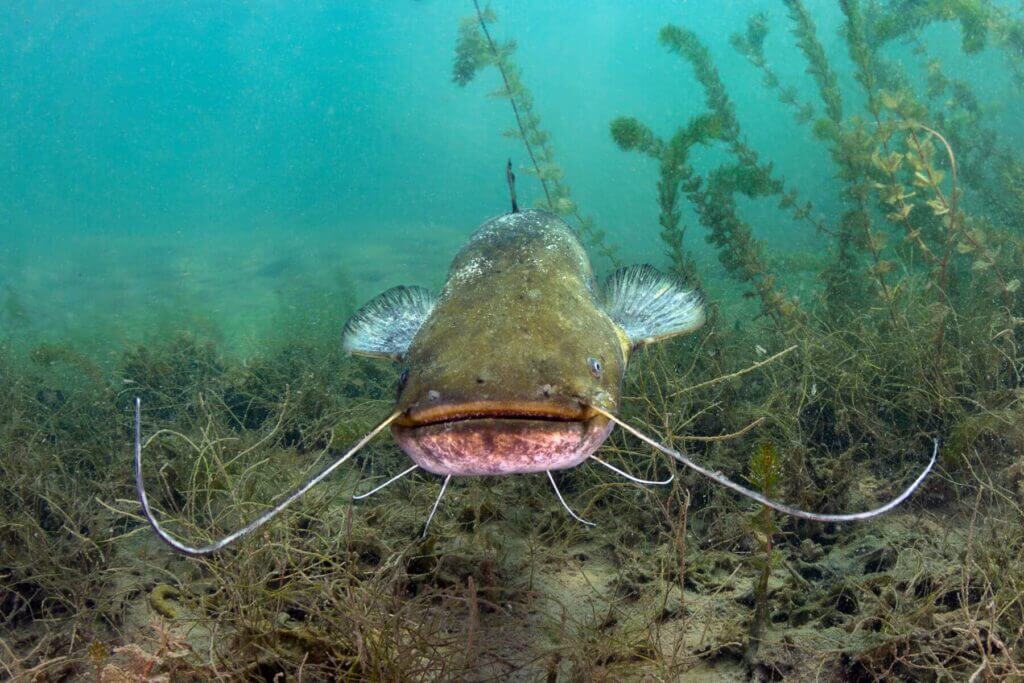Catfish are a diverse group of ray-finned fish found all over the world. They inhabit freshwater rivers, streams, lakes, and ponds on every continent except Antarctica. Catfish come in all shapes and sizes, with around 3,000 different species identified. But one question that often arises is – do catfish have scales?
Catfish belong to the order Siluriformes, which contains many scale-less fish families like loaches and squeakers. This leads some people to assume catfish are also scale-less. However, the reality is more complex. Many catfish species actually do have scales, while others have partial or reduced scalation.
In this article, we’ll explore the different types of scales found on catfish species. We’ll look at the functions catfish scales serve, and how they differ from the scales of other fish. Read on for some scale-y facts about these unique fish!
Types of Catfish Scales
There are three main types of scales found on different catfish species:
Placoid Scales
- Also called dermal denticles or “skin teeth”
- Found on sharks, rays, chimaeras
- Tiny V-shaped scales with an enamel-like layer
- Provide protection and reduce drag
Ganoid Scales
- Rhomboid/diamond-shaped, bony scales
- Covered with a glossy enamel surface
- Found on gar, bichirs, sturgeon, and some catfish
- Create lightweight, flexible armor
Cycloid Scales
- Thin, smooth, round scales made of collagen
- Flexible for swimming movements
- Found on carps, minnows, chars, and some catfish
- Reduce friction drag in the water
Different catfish species may have placoid, ganoid, cycloid or no scales depending on their habitat and lifestyle. Bottom-dwelling catfish tend to have tiny placoid scales or no scales, while fast-swimming predators have ganoid or cycloid scales.
Functions of Catfish Scales
Scales serve several important functions for catfish species that have them:
Physical Protection – Scales create an external armor layer to shield catfish from bumps, scrapes, and minor attacks from predators.
Hydrodynamic – Smooth, flexible scales reduce friction drag as catfish swim through the water. This helps them swim faster while expending less energy.
Sensory – Specialized pressure-sensing cells in some scales help catfish detect vibrations and movement in the surrounding water.
Camouflage – Thin, reflective scales can blend catfish into their environments by reflecting colors and patterns from surroundings.
Body Flexibility – The collagenous or enamel layers in scales provide flexibility for catfish bodies while also maintaining protection.
Buoyancy – Ganoid mineralized scales contribute to the buoyancy and density of catfish, allowing them to move up and down in the water column.
Abrasion Resistance – Enamel coatings on placoid and ganoid scales resist abrasion from contact with rocks, sand, debris, and other fish.
How Catfish Scales Differ From Other Fish
The scales found on catfish have some key differences compared to the scales of most bony fish species:
- Catfish may have placoid scales more common on cartilaginous fish like sharks.
- Ganoid scales on catfish are thicker and more heavily mineralized than the cycloid/ctenoid scales of most bony fish.
- Catfish species can have a mixture of placoid, ganoid, cycloid, and ctenoid scales rather than just one scale type.
- Many catfish lack scales entirely, especially on their heads and fins. Other fish are more fully covered in scales.
- Collagen layers make catfish scales highly flexible to facilitate body bending motions.
- Pressure-sensing cells are integrated into some catfish scales but not other fish scales.
- Catfish scales grow concentrically as the fish ages. Other fish shed scales as they grow.
These specialized scale adaptations allow catfish to thrive in their unique ecological niches as bottom-dwelling or armored predators.
Interesting Facts About Catfish Scales
Beyond the basics, catfish scales have some intriguing features and facts:
- Catfish can lock their placoid scales erect to scare predators or prevent capture.
- Ganoid scales create iridescent rainbow sheens that disappear when catfish are removed from water.
- Some catfish species can detach their scales with specialized muscle contractions as an anti-predator defense.
- Placoid scales gave catfish their nickname of “freshwater sharks”, though they are not closely related.
- The number, size and distribution of scales can help identify different catfish species.
- Fossilized catfish scales called ichthyoliths allow scientists to identify ancient catfish species.
- Catfish replace scales lost to injury by generating new scales from scale-forming cells in their skin.
- Some armor-plated catfish species like Corydoras have scales covering nearly their entire body surface.
- Catfish fry hatch with a partial or full layer of scales for immediate protection.
Understanding the diversity of catfish scales reveals the evolutionary adaptations that allow these fish to thrive in aquatic habitats worldwide.
In Summary: It’s Complicated!
Do catfish have scales? In short – it’s complicated! Some catfish species sport a full armor of ganoid or cycloid scales. Others have a partial covering of placoid scales, while some have no scales at all.
Catfish scales provide an array of functions from sensory capabilities to hydrodynamics and protection. The scalation patterns of catfish reveal the unique evolution and ecology of these diverse fish. So don’t underestimate the catfish – those tiny placoid scales could be hiding a freshwater titan!
FAQs About Catfish Scales
- Are all catfish scaleless? No, many catfish have placoid, ganoid or cycloid scales. Only some bottom-dwellers lack scales entirely.
- Do catfish scales grow back? Yes, catfish can regenerate lost scales over time the same way other fish regrow scales after injury.
- Can you eat catfish skin with scales? Catfish skin and scales are edible, though some people prefer removing the scales before cooking.
- Do catfish scales cut you? In most cases catfish scales are harmless if handled properly. Some larger species may have thick ganoid scales with sharp posterior edges.
- How are catfish scales arranged? Scales are arranged in diagonal rows with an overlapping shingled pattern to facilitate flexing motions.
Catfish come fully equipped with nature’s armor if needed. But as these unique fish show, scales are optional when you live on the bottom!





